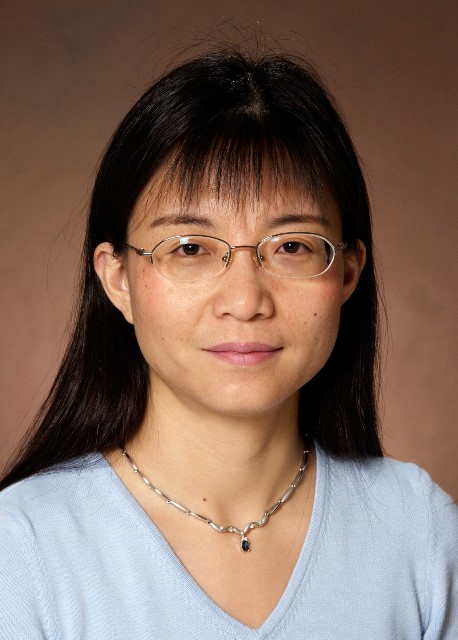报告题目:Ir(III) Complexes as in vitro Theranostic Photodynamic Therapy Agents
报 告 人: Wenfang Sun, Ph.D.
James A. Meier Senior Professor
Department of Chemistry and Biochemistry
North Dakota State University
主 持 人:陈华兵 教授
报告时间:2018年6月29日(星期五)上午9:30
报告地点:苏州大学独墅湖校区云轩楼1323会议室

个人简介:
Prof. Wenfang Sun is the James Meier Senior Professor and the Water F. and Verna Gehrts Presidential Professor at the Department of Chemistry and Biochemistry, North Dakota State University (NDSU). She received her B.S. degree in 1990 from Wuhan University, China; and her Ph.D. degree in Organic Chemistry from the Institute of Photographic Chemistry, Chinese Academy of Sciences in 1995. She was employed by this institute as an Assistant Professor in 1995, and then as an Associate Professor in 1996. She joined the Department of Physics, University of Alabama at Birmingham as a Postdoctoral Research Associate in 1997, and was promoted to a Research Assistant Professor in 1999. In 2001, she joined NDSU as an Assistant Professor, was tenured and promoted to an Associate Professor in 2007, and became a Full Professor and named the Walter F. and Verna Gehrts Professor in 2011. She was the Hubei 100 Talent Program Professor and is currently the Tianjin 1000 Talent Program Professor. She has published 113 peer-reviewed journal papers and 23 conference full papers. She obtained over $7,000,000 research grants from NSF, the US Army Research Laboratory, ACS-PRF, USDA, etc. She received numerious awards, including the NSF CAREER Award (2005-2011), the James A. Meier Senior Professorship (2016), the NDSU Fred Waldron Award for Outstanding Research (2012), the NDSU Walter F. and Verna Gehrts Professorship (2011), the NDSU Bison Ambassadors Apple Polisher Honoree (2009), the NDSU Featured Faculty (2006), and the 2nd-Class Chinese Academy of Sciences Natural Science Award (2002). She organized/co-organized, or chaired more than 10 national or international symposiums and presented ~120 invited talks or seminars. Currently, she serves on the editorial board of five international chemistry journals. Her research program covers the organic/organometallic nonlinear optical materials, organic/organometallic light emitting materials, photosensitizers for photodynamic therapy, and optical sensors.
研究简介:
In recent years, Ir(III) complexes have emerged as a new type of photosensitizers (PSs) for potential theranostic photodynamic therapy (PDT) applications because of their interesting photophysical properties, better cell membrane permeability, better photostability compared to organic PSs, and kinetic stability. Many of these complexes possess high triplet excited-state quantum yields and long-lived triplet excited states for efficient singlet oxygen and/or other reactive oxygen species (ROS) generation even under hypoxia via energy or electron transfer processes. It has been reported that cationic Ir(III) complexes can target mitochondria, lysosome, endoplasmic reticulum, or nucleus in a variety of cancer cell lines; and a mitochondria-targeted Ir(III) complex PS was reported to show improved PDT effects under hypoxia. These complexes also exhibit bright intracellular luminescence. However, many of the currently studied Ir(III) complex PSs have poor solubility in water, and they mainly absorb in the UV and blue spectral region. These drawbacks prevent them from potential clinical applications. To overcome these disadvantages, we synthesized and studied the photophysics and in vitro PDT effects and bioimaging of four series of Ir(III) complexes that have strong absorption in the visible to the red spectral region and are emissive in the red to the NIR region. The natures and energies of the lowest singlet and triplet excited states of these complexes are dramatically impacted by modifications of the ligands. The complexes can generate singlet oxygen efficiently, and exhibit a photodynamic therapeutic effect upon visible or red light activation, with one of the Ir(III) complexes possessing the largest phototherapeutic index reported to date (> 1600) for Ir(III) complexes upon white light activation. These complexes also produce strong intracellular luminescence that highlights their potential as theranostic PDT agents.